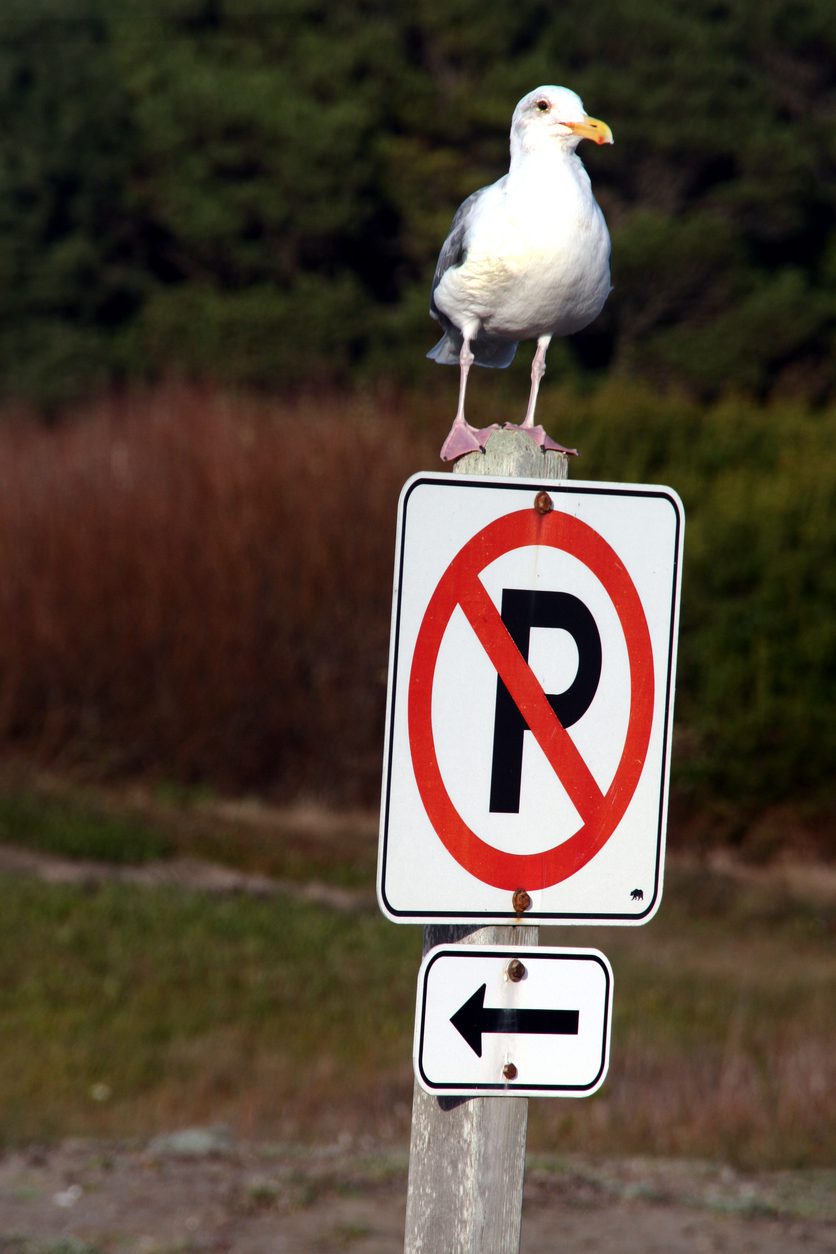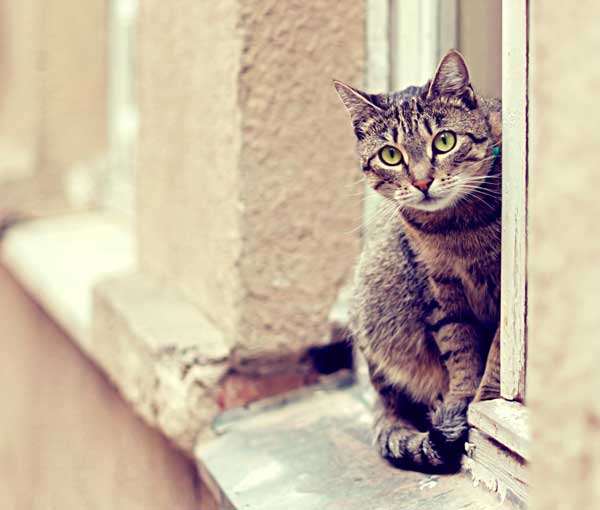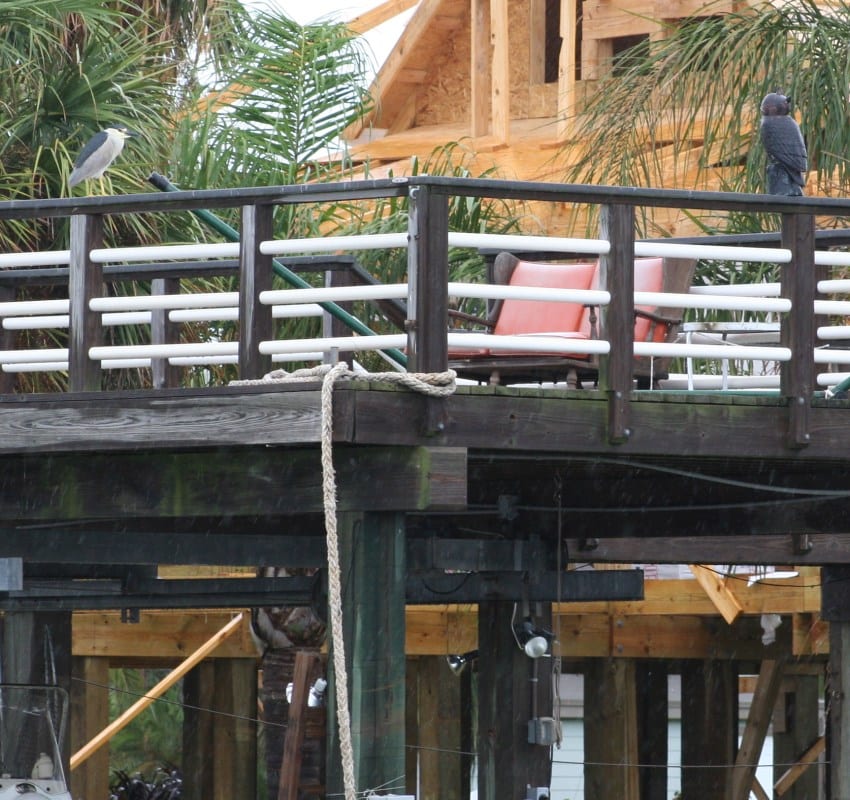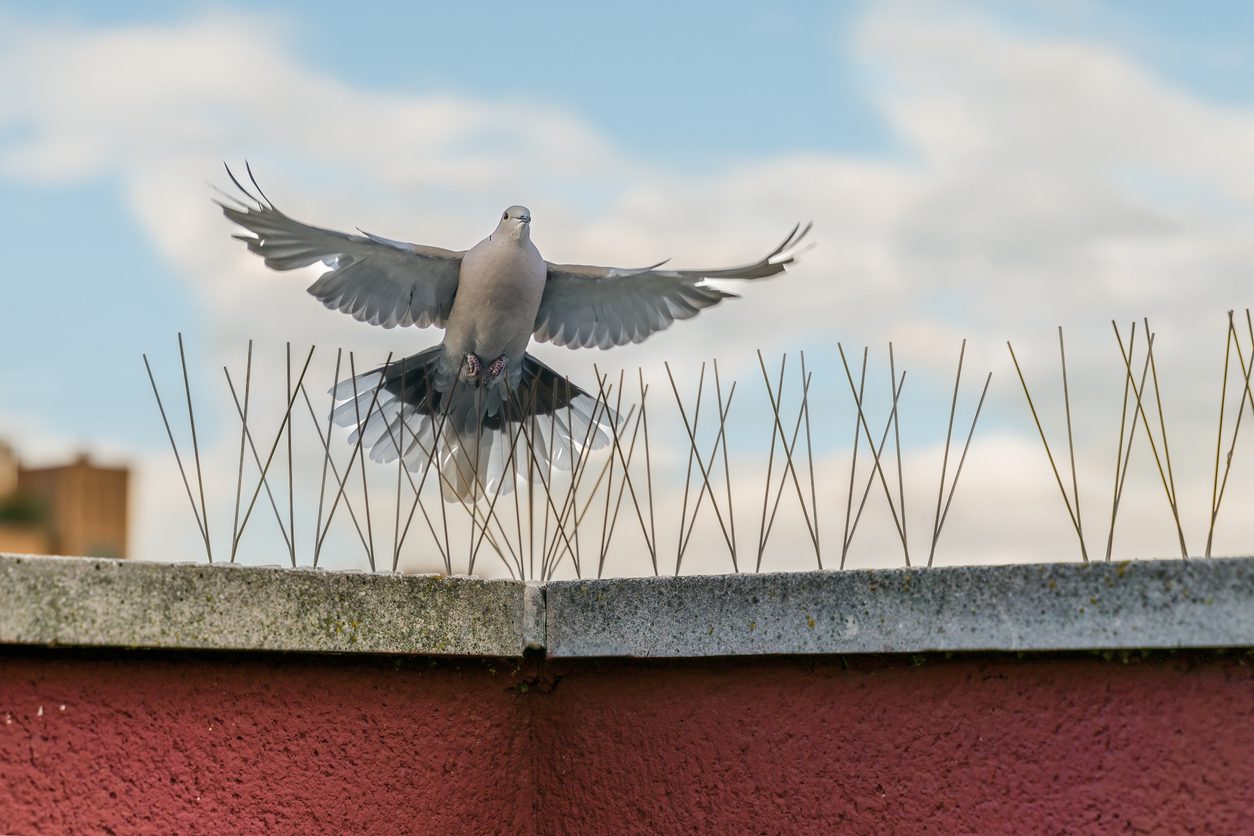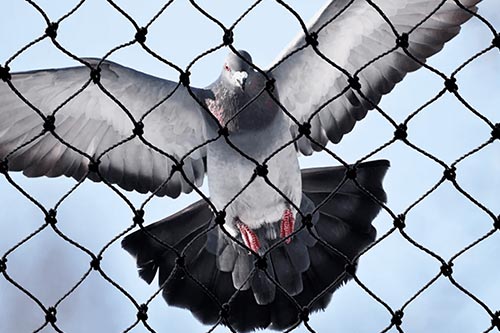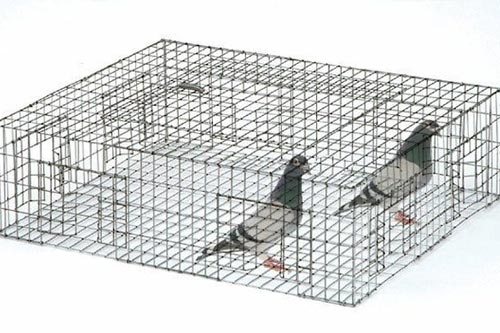
by Pigeon Patrol | Feb 10, 2025 | Animal Deterrent Products, Bird Deterrent Products, Bird Spike, Bird Spikes, Fence Spikes, Pigeon Control, Pigeon Droppings, Pigeon Spikes, Pigeons, Raccoons
Have you noticed pigeons perching on your fence or small animals like raccoons and squirrels climbing over? Fence spikes are an easy, humane, and effective solution to deter unwanted birds and pests.
Fence spikes prevent birds from roosting and make it difficult for animals or intruders to climb fences. They are a non-harmful way to protect your property from nuisance wildlife while adding an extra layer of security.
What Are Fence Spikes?
Fence spikes are thin, pointed strips that can be attached to fences, walls, and ledges to prevent birds and animals from landing or climbing.
They are typically made of:
- Plastic – Lightweight, affordable, and easy to install.
- Metal (Stainless Steel or Aluminum) – More durable, weather-resistant, and suitable for high-security areas.
How Do Fence Spikes Work?
Fence spikes do not injure or harm animals—they simply create an uncomfortable surface that prevents perching, climbing, or trespassing.
Pigeons, for example, prefer flat, stable surfaces to land on. When spikes are in place, they look for another location that is easier to access. Similarly, raccoons and cats will struggle to grip and climb over a fence with spikes.
Why You Need Fence Spikes?
1. Prevent Pigeons and Other Birds from Perching
Birds love to perch on fences, leaving unsightly droppings and making noise. Fence spikes provide a simple and long-term solution to keep them away.
2. Stop Animals from Climbing Over Fences
Fence spikes can deter small animals like:
✅ Raccoons
✅ Squirrels
✅ Cats
✅ Possums
These animals often use fences as pathways to access food sources or nesting areas. With spikes in place, they will move on to another location.
3. Improve Property Security
Fence spikes act as an extra deterrent against intruders by making it difficult to climb over walls or fences. They are often used in:
- Residential homes – Prevent break-ins.
- Commercial properties – Deter trespassers and vandals.
- Industrial sites – Protect equipment and supplies.
4. Weatherproof and Long-Lasting
Most fence spikes are made from durable materials like stainless steel or high-quality plastic. They can withstand:
☀️ Sun exposure
🌧️ Rain and snow
💨 Strong winds
Once installed, they require little to no maintenance.
Best Places to Install Fence Spikes
1. Residential Fences
Keep birds and small animals off wooden, vinyl, and metal fences around your home. This is especially useful if you have:
🏡 A garden – Protect plants from birds and animals.
🐾 Pets – Prevent raccoons from entering your yard.
2. Commercial Property Fences
Fence spikes are often installed on business properties to prevent:
🏢 Vandalism and trespassing
🚛 Theft from storage yards
3. Walls and Ledges
Pigeons love to perch on high walls and ledges. Installing spikes in these areas will keep them away for good.
4. Garage Roofs and Sheds
Garage roofs are common resting spots for pigeons. Prevent them from nesting by adding fence spikes to the edges.
How to Install Fence Spikes
Step 1: Choose the Right Type of Spikes
- Plastic spikes are best for residential fences and areas with low security concerns.
- Metal spikes are ideal for high-security zones, commercial properties, and industrial sites.
Step 2: Clean the Installation Surface
Remove any dirt, bird droppings, or debris before installation. This ensures a strong bond with the surface.
Step 3: Measure and Cut Spikes to Fit
Use scissors or wire cutters to trim spikes to the required length.
Step 4: Attach the Spikes Securely
You can secure fence spikes using:
🔹 Adhesive – Best for plastic spikes and temporary installations.
🔹 Screws or nails – Provides a more permanent and weather-resistant installation.
Step 5: Inspect for Gaps
Ensure there are no spaces where birds or animals can still land or climb through.
Maintenance Tips for Fence Spikes
🛠️ Check spikes regularly for wear and tear.
🧽 Remove debris and dust that may collect over time.
🌦️ Inspect after storms to ensure they are still securely in place.
Once installed, fence spikes require little upkeep and remain effective for years.
Do fence spikes hurt birds or animals?
No! Fence spikes are designed to make surfaces uncomfortable, not to injure. Birds and animals will simply choose another location.
Can fence spikes be installed on all types of fences?
Yes! Fence spikes work on wood, vinyl, metal, concrete, and brick fences.
Are metal spikes better than plastic ones?
Metal spikes are more durable and weather-resistant, while plastic spikes are cheaper and easier to install.
How long do fence spikes last?
High-quality spikes can last 5-10 years or more with proper installation.
Where can I buy high-quality fence spikes?
Find durable and affordable fence spikes at Pigeon Patrol.
Fence spikes are a simple, effective, and humane way to prevent pigeons, small animals, and intruders from accessing your property. Whether you’re looking to protect your fence, deter climbing animals, or enhance security, fence spikes are a cost-effective solution.
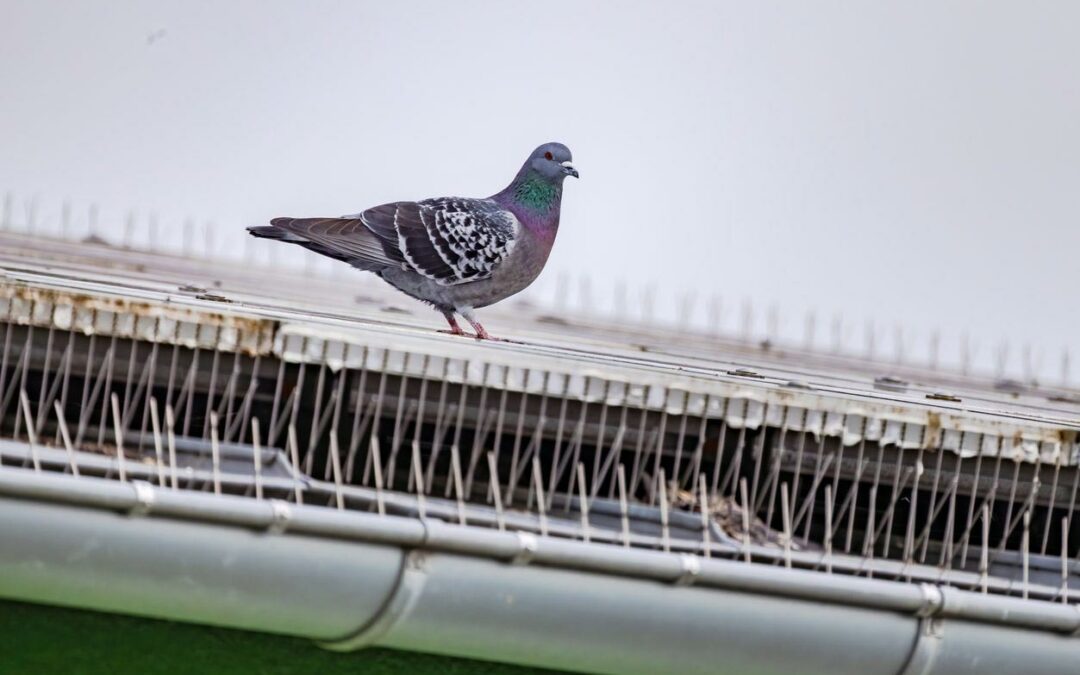
by Pigeon Patrol | Feb 10, 2025 | Animal Deterrent Products, Bird Deterrent Products, Bird Spike, Bird Spikes, Pigeon Control, Pigeon Droppings, Pigeon Spikes, Pigeons, Raccoons
Pigeons are notorious for perching, roosting, and making a mess on buildings, ledges, and signs. If you’re tired of constantly cleaning up pigeon droppings or dealing with unwanted birds, pigeon spikes are one of the best long-term solutions.
Pigeon spikes are a safe, humane, and highly effective method to prevent birds from landing in specific areas. Unlike harmful methods, spikes don’t injure birds; they simply make it uncomfortable for them to perch.
What Are Pigeon Spikes?
Pigeon spikes are narrow strips with upward-pointing rods that make it physically impossible for birds to land. They can be made of:
- Stainless steel – Durable, weather-resistant, and long-lasting.
- Plastic – A cost-effective alternative that still works well.
How Do Pigeon Spikes Work?
Bird spikes work by creating an uneven surface, preventing pigeons from finding a comfortable place to perch. With no space to land, they will eventually move on to another location.
Why You Need Pigeon Spikes
1. 100% Humane and Non-Harmful
Pigeon spikes do not harm birds. Instead, they create an environment where pigeons simply can’t land.
2. Protect Property from Bird Droppings
Pigeon droppings are not just unsightly; they also contain acidic properties that can damage paint, metal, and concrete. Installing bird spikes can save you money on cleaning and repairs.
3. Keep Business Signs and Storefronts Clean
If pigeons are constantly sitting on your business sign or awning, it can create a bad impression on customers. Bird spikes keep commercial properties clean and professional-looking.
4. Reduce Noise and Nesting Problems
Pigeons are noisy, and when they start nesting, the problem escalates quickly. By installing bird spikes early, you can prevent large infestations.
Where Should You Install Pigeon Spikes?
Bird spikes work best in areas where pigeons frequently perch and roost. Consider installing them in the following locations:
Roofs and Parapets
These areas provide pigeons with shelter and elevation.
Commercial Signs and Storefronts
Protect your business signage from becoming a bird rest stop.
Ledges and Windowsills
Pigeons love flat surfaces where they can rest and observe their surroundings.
Fences and Railings
Keep pigeons from gathering and creating a mess.
How to Install Pigeon Spikes
Installing bird spikes is easy and doesn’t require professional help. Follow these steps:
- Clean the Surface – Remove dirt, droppings, and debris for a strong adhesive bond.
- Measure and Cut – Trim the spikes to fit the specific area.
- Apply Adhesive or Screws – Use a strong bird spike adhesive or screws to secure the strips in place.
- Check for Gaps – Ensure pigeons can’t find small openings to land in.
Do pigeon spikes work for all bird species?
Pigeon spikes primarily target larger birds like pigeons, crows, and seagulls. Smaller birds may still find ways to land in between them.
Can I remove pigeon spikes if needed?
Yes, pigeon spikes can be removed without damaging surfaces, especially if installed using adhesive.
Are pigeon spikes weatherproof?
Yes! Stainless steel spikes are resistant to rain, wind, and UV exposure, making them highly durable.
Will pigeons eventually stop coming back?
Yes, if you remove food sources, block access points, and use deterrents consistently, pigeons will find another place to roost.
Where can I buy high-quality pigeon deterrents?
You can get bird spikes, netting, and repellers at Pigeon Patrol, a trusted name in pigeon control solutions.
Pigeon spikes are an effective, humane, and affordable way to stop pigeons from perching and making a mess on your property. By installing high-quality stainless steel or plastic spikes, you can protect your home, business, and buildings from damage caused by pest birds.
For top-rated bird spikes, check out Pigeon Patrol’s selection here.
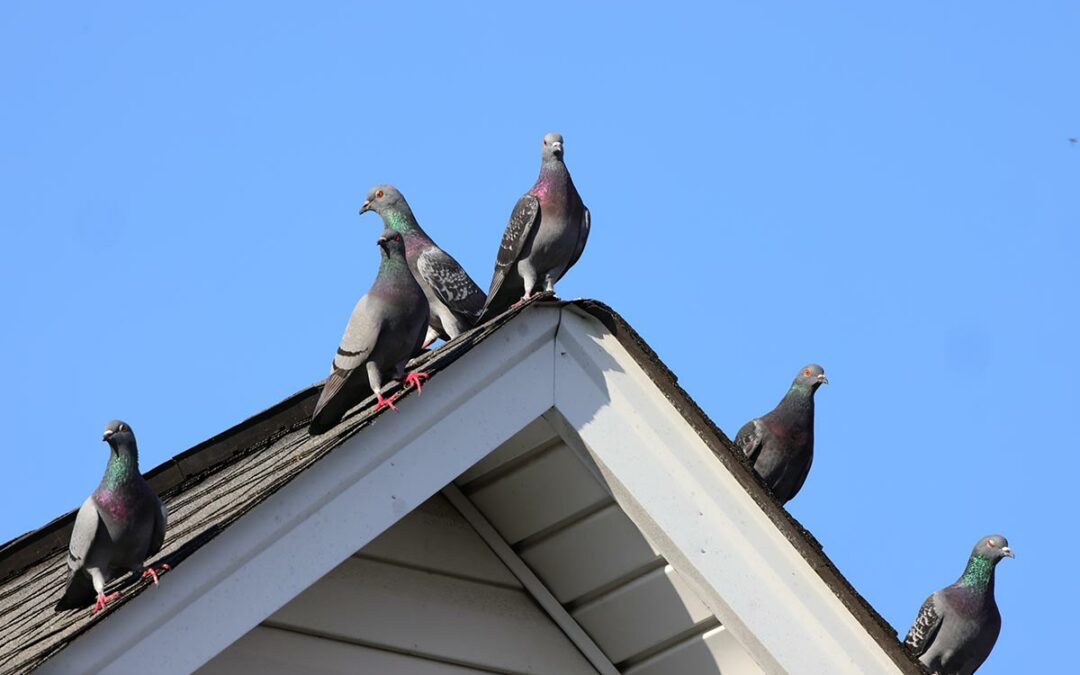
by Pigeon Patrol | Feb 10, 2025 | 4-S Gel Bird repellent, Animal Deterrent Products, Bird Deterrent Products, Bird Netting, Bird Spike, Bird Spikes, pet bird, Pigeon Patrol's Services, Pigeon Spikes, Pigeons, Raccoons, Sparrows, UltraSonic Bird Control
Pigeons may seem harmless at first, but once they take over a property, they can create serious problems. They leave behind acidic droppings, clog drainage systems, spread diseases, and make a lot of noise. If you’re dealing with a pigeon infestation, you’re probably wondering: how do I get rid of pigeons for good?
The good news is that there are humane and effective methods to control pigeons. In this guide, we’ll cover why pigeons are a problem, the best pigeon control solutions, and how to prevent them from returning.
Why Pigeons Are a Problem
1. Pigeon Droppings Cause Property Damage
Pigeon droppings are acidic and can erode stone, concrete, and metal surfaces. Over time, this can cause damage to rooftops, balconies, cars, and historical buildings.
2. Pigeons Spread Diseases
Pigeons carry bacteria, fungi, and parasites that can lead to serious health risks. Some diseases associated with pigeons include:
- Histoplasmosis – A fungal infection that affects the lungs.
- Salmonella – Bacteria that cause food poisoning.
- E. coli – A serious bacterial infection.
3. They Block Drainage and Ventilation Systems
Pigeons often nest in gutters, vents, and chimneys, causing blockages that can lead to water damage and poor air circulation.
4. Pigeon Infestations Hurt Business Image
If pigeons are constantly roosting on your storefront or business sign, it can create a dirty and unprofessional look that turns away customers.
Best Ways to Get Rid of Pigeons
Install Bird Spikes to Prevent Perching
Bird spikes are one of the best pigeon deterrents. They are designed to make it impossible for pigeons to land on ledges, fences, and rooftops.
Use Bird Netting to Keep Pigeons Away from Large Areas
If you need to prevent pigeons from accessing balconies, rooftops, or warehouses, bird netting is a great solution. It creates a physical barrier without harming the birds.
Install Pigeon Repellers (Ultrasonic & Motion Activated)
Ultrasonic pigeon repellers emit high-frequency sounds that humans can’t hear but pigeons find annoying. Motion-activated repellers use light and sound to scare birds away.
Pigeon Trapping for Severe Infestations
For larger infestations, humane pigeon traps may be necessary.
Simple Solutions
- Block Entry Points with Pigeon-Proof Barriers
Pigeons like to nest in vents, chimneys, and eaves. Use wire mesh or netting to block these spaces and prevent pigeons from returning.
- Clean Up Food Sources & Water Availability
Pigeons are drawn to food scraps and water sources. Seal trash bins, clean up outdoor eating areas, and remove standing water to make your property less attractive to pigeons.
Are bird spikes harmful to pigeons?
No, bird spikes do not harm pigeons. They simply prevent them from landing on surfaces.
How long does it take for pigeon deterrents to work?
Most deterrents work immediately after installation. However, pigeons may take a few days to realize the area is no longer suitable for roosting.
Do pigeon repellers work on other birds?
Yes, ultrasonic and motion-activated repellers can deter other pest birds such as crows and seagulls.
Will pigeons eventually stop coming back?
Yes, if you remove food sources, block access points, and use deterrents consistently, pigeons will find another place to roost.
Where can I buy high-quality pigeon deterrents?
You can get bird spikes, netting, and repellers at Pigeon Patrol, a trusted name in pigeon control solutions.
Pigeons can be a major nuisance, but with the right pigeon control solutions, you can protect your home or business. Whether you choose bird spikes, netting, repellers, or a combination of these, taking proactive steps will keep pigeons away for good.
For expert pigeon control products, check out our Pigeon Patrol products and browse our range of humane pigeon deterrents.

by Pigeon Patrol | Oct 15, 2024 | Bird Netting, Bird Spike, Pigeon Spikes, Pigeons
Dead pigeons were being found in a hospital at the centre of infection concerns years before action was taken to address the issue, an inquiry has heard.
The Scottish Hospitals Inquiry was told that as early as 2016, pest controllers were being called to the Queen Elizabeth University Hospital in Glasgow to remove dead pigeons from plant rooms, where air handling units linked to the ventilation system were located.
The inquiry was shown part of a survey by cleaning firm GP Environmental from March 2017, which stated “ledges, beams, walls, floors and walkways of the plant rooms” had “a heavy build-up” of pigeon droppings.
Another GP Environmental report from 2018, relating to sanitisation work in a plant room, said: “All pipe lagging will need replaced due to damage from pigeon fouling.”
Karen Connelly, who became general manager of estates and facilities at the hospital in 2018, having previously worked there as part of a project team until 2015, told the inquiry she had not been aware of these reports, but that the pigeon problem at the hospital was “well known”.
The former facilities manager, whose team was responsible for pest control, said it was not until January 2019 that she became aware pigeons were getting into plant rooms.
She said shortly before this, she became aware of a potential link between pigeon droppings and Cryptococcosis, which had been identified by the hospital’s Internal Medicine Training team.
Cryptococcosis is a fungal infection that can spread to humans from pigeon droppings.
Up until this point, she said, she thought pigeons posed a health and safety risk of “slipping, and also from an aesthetic point of view it looks dreadful as well”.
The sheer level of pigeon numbers are now posing a significant health and safety issue in many locations of the site
The inquiry is currently investigating the construction of the QEUH campus in Glasgow, which includes the Royal Hospital for Children.
It was launched in the wake of deaths linked to infections, including that of 10-year-old Milly Main.
GP Environmental was instructed to carry out a survey of the problem, and on January 8 2019 it reported a “significant feral pigeon infestation across the site at the QEUH, Glasgow”.
The report added: “The sheer level of pigeon numbers are now posing a significant health and safety issue in many locations of the site.”
Ms Connelly said she then visited the plant rooms, saying in her statement to the inquiry: “We found evidence of pigeon infestation and pigeon guano. This was my first visit to the plant room since the concerns were raised.”
She said she instructed GP Environmental to put together “a programme of work to clean every plant room within the hospital site, and to install proofing or block up any gaps in the buildings that pigeons may be able to access”.
She agreed with counsel to the inquiry Craig Connal KC that the reference in the report to health and safety issues was a “surprise”, adding she had not seen that in other reports from GP Environmental but she did not question it.
She explained: “I just assumed that because of aesthetically, how bad it looked, about possible slips and trips and falls, but also the fact that there had been that connection to the recent outbreaks in the wards”.
Possibly in hindsight we could have had regular inspections of the plant rooms and other inaccessible areas carried out by pest control companies, which may have prevented the problem arising to such a levelKaren Connelly
She said after starting clean-up work, GP Environmental was “on site daily for a period of weeks, if not months”, and she was shown photographs of pigeon guano in a variety of locations around the site.
In her statement to the inquiry, Ms Connelly conceded: “Possibly in hindsight we could have had regular inspections of the plant rooms and other inaccessible areas carried out by pest control companies, which may have prevented the problem arising to such a level.”
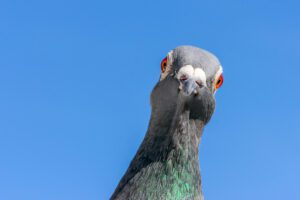
Portrait of a racing or homing pigeon looking into the camera.
The inquiry also heard that while all pest control issues were handled by the central facilities team and recorded on a single system, they did not analyse reports of infestations to identify trouble spots.
Ms Connelly told the inquiry: “Whether we had any analysis done in terms of what the make-up of all the calls were, I don’t remember us doing that.”
In the afternoon session on Friday, the inquiry heard from Pamela Joannidis, a consultant nurse at NHS Greater Glasgow and Clyde who said she noted concerns about dust collecting on top of chilled beams which ran through the hospital.
When asked how dusty they were, she replied: “They were a level above what you would expect.”
Ms Joannidis also told the inquiry condensation forming on the chilled beams would occasionally drip on to the wards below.
She said: “I don’t remember it being overly much, there was just drips and you didn’t know when the drips would happen. It could drip on to beds.”
The inquiry, taking place before Lord Brodie in Edinburgh, continues.
Pigeon Patrol
Pigeon Patrol Products & Services is the leading manufacturer and distributor of bird deterrent (control) products in Canada. Pigeon Patrol products have solved pest bird problems in industrial, commercial, and residential settings since 2000, by using safe and humane bird deterrents with only bird and animal -friendly solutions. At Pigeon Patrol, we manufacture and offer a variety of bird deterrents, ranging from Ultra-flex Bird Spikes with UV protection, Bird Netting, 4-S Bird Gel and the best Ultrasonic and audible sound devices on the market today.
Canada’s top wholesaler for bird deterrent products for twelve consecutive years.
Contact us at 1- 877– 4– NO-BIRD, (604) 585-9279 or visit our website at https://www.pigeonpatrol.ca/
Bird Gone, Pigeon Gone, Pigeon problems, pigeon spikes, 1-877-4NO-BIRD, 4-S Gel, Bird Control, Pigeon Control, bird repellent, Bird Spikes, sonic bird repellent, stainless steel bird spikes, bird spikes Vancouver, Ultra Sonic Bird Control, Bird Netting, Plastic Bird Spikes, Canada bird spike deterrents, Pigeon Pests, B Gone Pigeon, Pigeon Patrol, pest controller, pest control operator, pest control technician, Pigeon Control Products, humane pigeon spikes, pigeon deterrents, pigeon traps, Pigeon repellents, Sound & Laser Deterrents, wildlife control, raccoon, skunk, squirrel deterrent, De-Fence Spikes, Dragons Den, Pigeon, Pigeon Patrol, Pigeons Roosting, Vancouver Pigeon Control, Bird Spikes, Bird Control, Bird Deterrent, Pigeon Deterrent, Surrey Pigeon Control, Pest, Seagull deterrent Vancouver Pigeon Blog, Birds Inside Home De-fence, Pigeon Nesting, Bird Droppings, Pigeon Dropping, woodpecker control, Keep The Birds Away, Birds/rats, seagull, pigeon, woodpecker, dove, sparrow, pidgeon control, pidgeon problem, pidgeon control, flying rats, pigeon Problems, bird netting, bird gel, bird spray, bird nails, bird guard, Pigeon control, Bird deterrents, Pigeon deterrents, Bird control, solutions, Pigeon prevention, Pigeon repellent, Bird proofing, Pest bird management, Pigeon spikes, Bird netting, Humane bird control, Bird exclusion, Urban bird control, Anti-roosting devices, Pigeon removal, Bird barriers
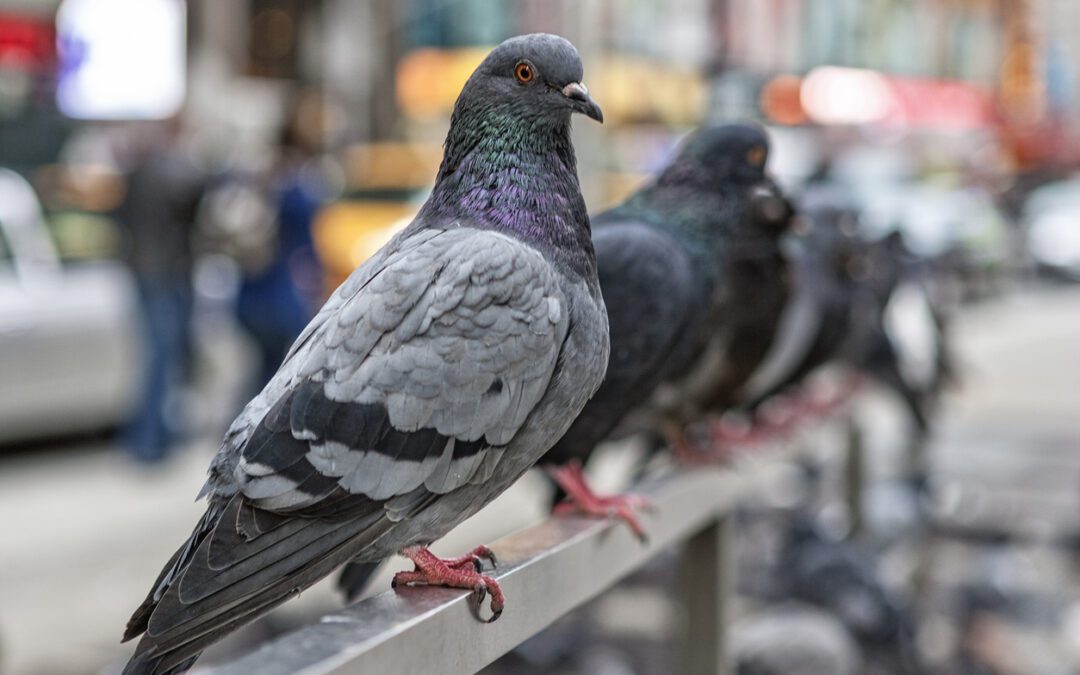
by Pigeon Patrol | Oct 15, 2024 | Animal Deterrent Products, Bird Netting, Bird Spike, Pigeons, Pigeons in the News, UltraSonic Bird Control
VANCOUVER, BC — TransLink and the BC SPCA are teaming up to humanely reduce the pigeon population at VCC-Clark SkyTrain Station. An automatic bird feeder is dispensing birth control for a pilot project to control the pigeon population. OvoControl is a non-toxic, effective and humane contraception used in other cities to prevent pigeon reproduction and reduce populations naturally through attrition.
Pigeons cause problems at several SkyTrain stations despite TransLink’s best efforts to control them. TransLink has:
- Installed netting at stations to stop birds from getting into empty spaces
- Set up spikes and strips to deter pigeons from roosting on flat surfaces
- Hired a falconer to patrol stations with the most pigeons as part of another pilot project
Studies have shown a 50-90% population reduction in OvoControl managed pigeon populations. Pigeons that eat the bait pellets on a regular basis will not be able to fertilize eggs.
Dr. Sara Dubois, Chief Scientific Officer with the BC SPCA explains pigeons can breed rapidly but their urban lifespans are short. With fewer new pigeons born, the pigeon population around SkyTrain stations will reduce naturally and cause fewer operational issues, “OvoControl has been approved for use by Health Canada and only has contraceptive effects in birds. Pigeons must eat their daily dose (5g/bird) for the contraceptive to work, and it is designed to be fed in a manner to maximize pigeon feeding behaviour. We are happy TransLink is ready to partner with us and research what could be a very effective and humane long-term solution.”
Pigeon droppings are messy, but the birds also put customer safety at risk. Pigeons trigger track intrusion alarms, causing our driver-less trains to brake automatically. These hard stops can lead to customer falls and service delays.
TransLink customers and the public can help by not feeding the birds. Outside foods sources encourage birds to roost inside stations and can draw pigeons away from the contraceptive pellets. It is vital for the success of the project that people stop feeding pigeons in this area.
The OvoControl pilot may be expanded to other stations if successful at VCC-Clark.
The innovative partnership between TransLink and the BC SPCA has been supported by other local animal groups:
Linda Bakker, Co-Executive Director, Wildlife Rescue Association –
“The Wildlife Rescue Association of BC supports this new initiative to humanely reduce the pigeon population. Wildlife Rescue strives to reduce human-wildlife conflict in the urban environment and rehabilitates injured and orphaned wildlife. This project aims to humanely reduce the number of pigeons at areas that have a lot of potential casualties and injuries in pigeons. This project will reduce the number of injured, deceased and orphaned pigeons in these areas. Wildlife Rescue supports the BC SPCA in promoting humane wildlife management practices.”
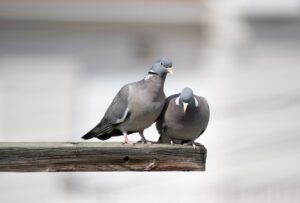
Two pigeons sitting together on piece of wood.
Michael Austin, Executive Director of the Vancouver Humane Society –
“While we continue to grow our wonderful city, it is important to consider the impact such developments have on urban wildlife; Vancouver Humane is pleased to support this initiative by TransLink and the BC SPCA to humanely control the pigeon population in order to reduce unnecessary suffering. We hope that other businesses can learn from this work and that more considerations are made for the non-human animals that live in our communities.”
TransLink is Metro Vancouver’s regional transportation authority and is the first North American transportation authority to be responsible for the planning, financing and managing of all public transit in addition to major regional roads and bridges.
Pigeon Patrol
Pigeon Patrol Products & Services is the leading manufacturer and distributor of bird deterrent (control) products in Canada. Pigeon Patrol products have solved pest bird problems in industrial, commercial, and residential settings since 2000, by using safe and humane bird deterrents with only bird and animal -friendly solutions. At Pigeon Patrol, we manufacture and offer a variety of bird deterrents, ranging from Ultra-flex Bird Spikes with UV protection, Bird Netting, 4-S Bird Gel and the best Ultrasonic and audible sound devices on the market today.
Canada’s top wholesaler for bird deterrent products for twelve consecutive years.
Contact us at 1- 877– 4– NO-BIRD, (604) 585-9279 or visit our website at https://www.pigeonpatrol.ca/
Bird Gone, Pigeon Gone, Pigeon problems, pigeon spikes, 1-877-4NO-BIRD, 4-S Gel, Bird Control, Pigeon Control, bird repellent, Bird Spikes, sonic bird repellent, stainless steel bird spikes, bird spikes Vancouver, Ultra Sonic Bird Control, Bird Netting, Plastic Bird Spikes, Canada bird spike deterrents, Pigeon Pests, B Gone Pigeon, Pigeon Patrol, pest controller, pest control operator, pest control technician, Pigeon Control Products, humane pigeon spikes, pigeon deterrents, pigeon traps, Pigeon repellents, Sound & Laser Deterrents, wildlife control, raccoon, skunk, squirrel deterrent, De-Fence Spikes, Dragons Den, Pigeon, Pigeon Patrol, Pigeons Roosting, Vancouver Pigeon Control, Bird Spikes, Bird Control, Bird Deterrent, Pigeon Deterrent, Surrey Pigeon Control, Pest, Seagull deterrent Vancouver Pigeon Blog, Birds Inside Home De-fence, Pigeon Nesting, Bird Droppings, Pigeon Dropping, woodpecker control, Keep The Birds Away, Birds/rats, seagull, pigeon, woodpecker, dove, sparrow, pidgeon control, pidgeon problem, pidgeon control, flying rats, pigeon Problems, bird netting, bird gel, bird spray, bird nails, bird guard, Pigeon control, Bird deterrents, Pigeon deterrents, Bird control, solutions, Pigeon prevention, Pigeon repellent, Bird proofing, Pest bird management, Pigeon spikes, Bird netting, Humane bird control, Bird exclusion, Urban bird control, Anti-roosting devices, Pigeon removal, Bird barriers
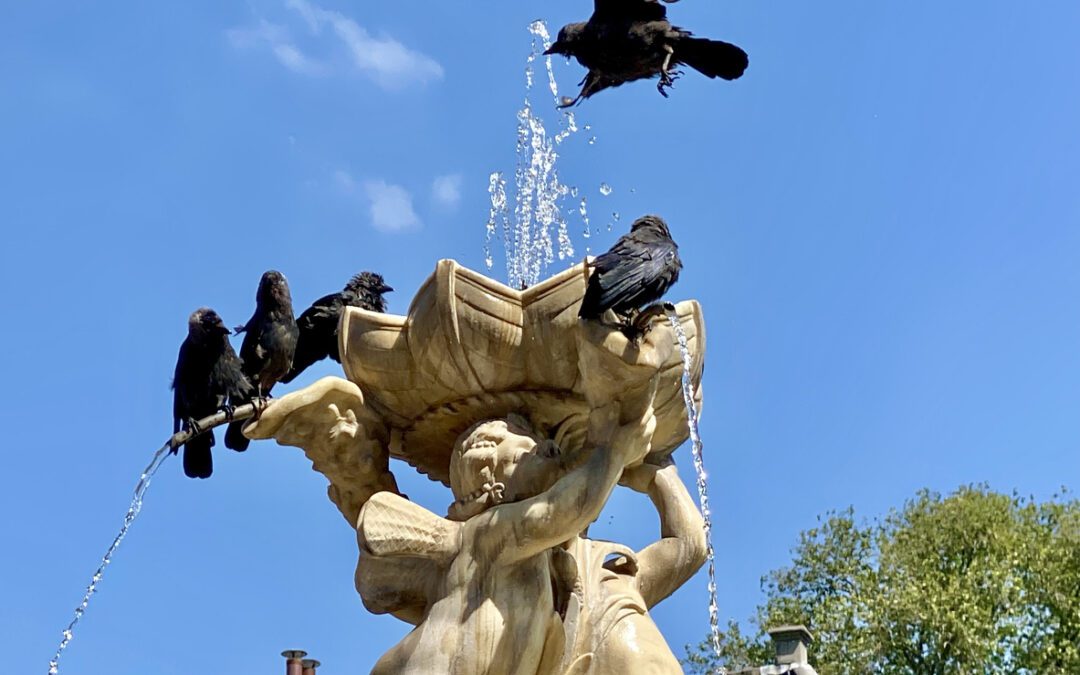
by Pigeon Patrol | Oct 15, 2024 | Bird Netting, Bird Spike, Pigeon Spikes, Pigeons, Pigeons in the News
The last pigeon feed seller in London’s Trafalgar Square has agreed to stop trading in return for a cash payment.
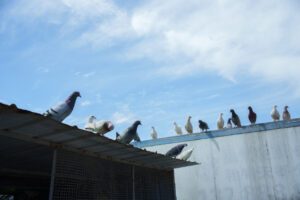
Pigeon standing on the house
Bernard Rayner reached an out-of-court agreement after a legal battle with London Mayor Ken Livingstone, who wants to clean up the mess caused by the birds.
Mr Rayner, 47, had taken his fight against eviction from his pitch to the High Court, pressing for a judicial review of the decision.
But in a surprise move on Wednesday morning, the judge who was due to hear the case, Mr Justice Hooper, was told Mr Rayner was now prepared to cease trading with immediate effect.
Outside court Mr Rayner denied that he had sold out, saying he was “happy” about the settlement.
The amount has not been disclosed, but Mr Rayner said: “I have got the best possible deal.”
The London Mayor, Ken Livingstone, said later in a statement: “I am delighted we have managed to reach agreement so quickly.
“The out-of-court settlement now means I can continue with my plans to transform Trafalgar Square into a cultural space for Londoners and visitors to enjoy.”
Solicitors for The Greater London Authority (GLA) said an agreed sum would be paid to Mr Rayner “to recognise the fact that he will be unable to trade in the square in the future”.Part of the sum representing Mr Rayner’s costs would be donated to an animal welfare organisation.
The GLA is to organise a programme for the phased withdrawal of feeding the pigeons until 30 April. After the settlement was announced, Mr Rayner described the withdrawal scheme as “the best possible plan”. The GLA stripped Mr Rayner of his licence in the autumn, but then granted a temporary reprieve which ran out in mid-January.
Mr Rayner then won a court ruling allowing him to continue trading until Wednesday.
‘Health hazard’
Mr Livingstone recently described pigeons as “rats with wings”, and a health hazard.
The GLA plans to clean up the mess in Trafalgar Square caused by pigeon droppings, and pedestrianise the upper part of the square to make way for more cultural pursuits for visitors.
Pigeon campaigners expressed their dismay over Wednesday’s settlement, accusing Mr Livingstone of “bully boy tactics”.
Andrew Butler, the UK representative of People for the Ethical Treatment of Animals Europe (PETA), said: “Basically this spells disaster for London’s pigeon population.
“There is a strong likelihood that 25% of the 6,000 Trafalgar Square flock will starve to death.”
Pigeon Patrol Products & Services is the leading manufacturer and distributor of bird deterrent (control) products in Canada. Pigeon Patrol products have solved pest bird problems in industrial, commercial, and residential settings since 2000, by using safe and humane bird deterrents with only bird and animal -friendly solutions. At Pigeon Patrol, we manufacture and offer a variety of bird deterrents, ranging from Ultra-flex Bird Spikes with UV protection, Bird Netting, 4-S Bird Gel and the best Ultrasonic and audible sound devices on the market today.
Canada’s top wholesaler for bird deterrent products for twelve consecutive years.
Contact us at 1- 877– 4– NO-BIRD, (604) 585-9279 or visit our website at https://www.pigeonpatrol.ca/
Bird Gone, Pigeon Gone, Pigeon problems, pigeon spikes, 1-877-4NO-BIRD, 4-S Gel, Bird Control, Pigeon Control, bird repellent, Bird Spikes, sonic bird repellent, stainless steel bird spikes, bird spikes Vancouver, Ultra Sonic Bird Control, Bird Netting, Plastic Bird Spikes, Canada bird spike deterrents, Pigeon Pests, B Gone Pigeon, Pigeon Patrol, pest controller, pest control operator, pest control technician, Pigeon Control Products, humane pigeon spikes, pigeon deterrents, pigeon traps, Pigeon repellents, Sound & Laser Deterrents, wildlife control, raccoon, skunk, squirrel deterrent, De-Fence Spikes, Dragons Den, Pigeon, Pigeon Patrol, Pigeons Roosting, Vancouver Pigeon Control, Bird Spikes, Bird Control, Bird Deterrent, Pigeon Deterrent, Surrey Pigeon Control, Pest, Seagull deterrent Vancouver Pigeon Blog, Birds Inside Home De-fence, Pigeon Nesting, Bird Droppings, Pigeon Dropping, woodpecker control, Keep The Birds Away, Birds/rats, seagull, pigeon, woodpecker, dove, sparrow, pidgeon control, pidgeon problem, pidgeon control, flying rats, pigeon Problems, bird netting, bird gel, bird spray, bird nails, bird guard, Pigeon control, Bird deterrents, Pigeon deterrents, Bird control, solutions, Pigeon prevention, Pigeon repellent, Bird proofing, Pest bird management, Pigeon spikes, Bird netting, Humane bird control, Bird exclusion, Urban bird control, Anti-roosting devices, Pigeon removal, Bird barriers




